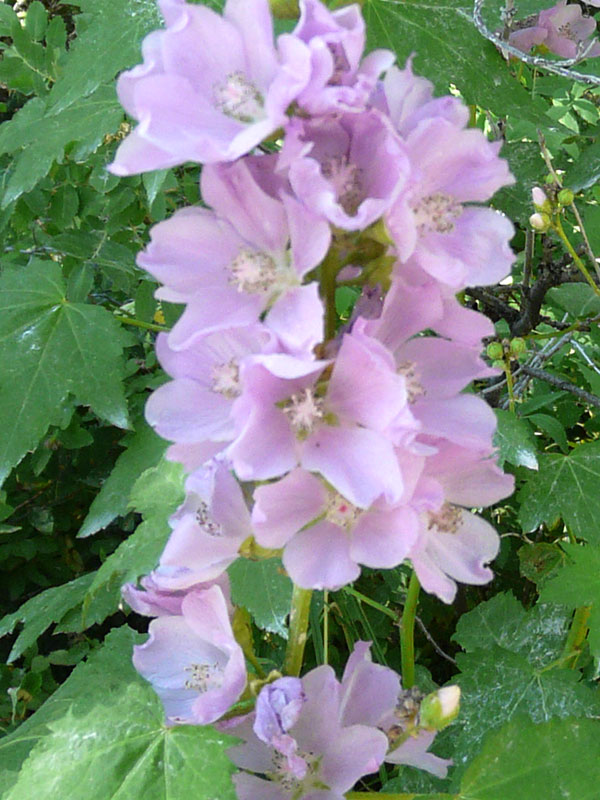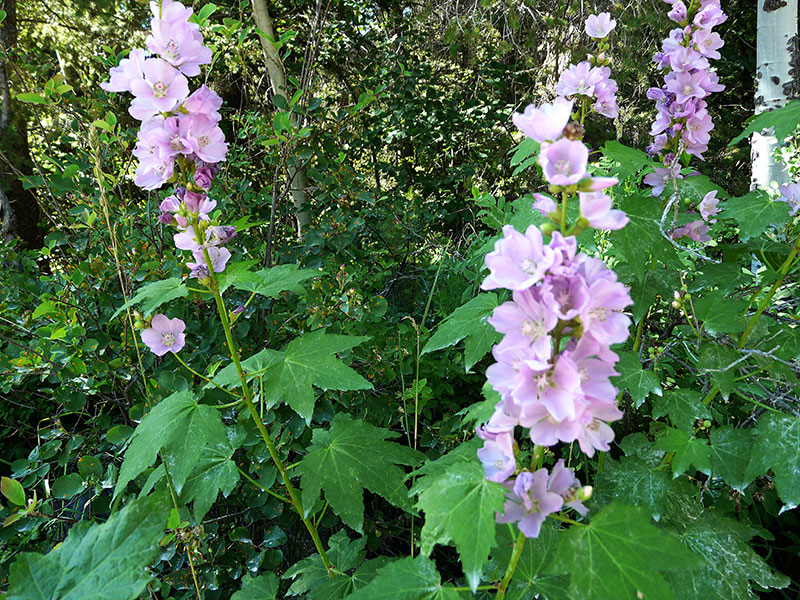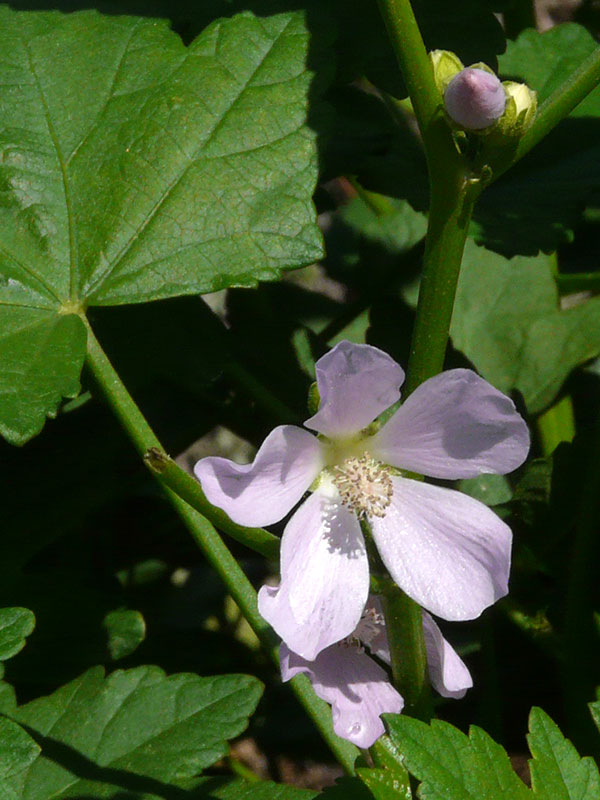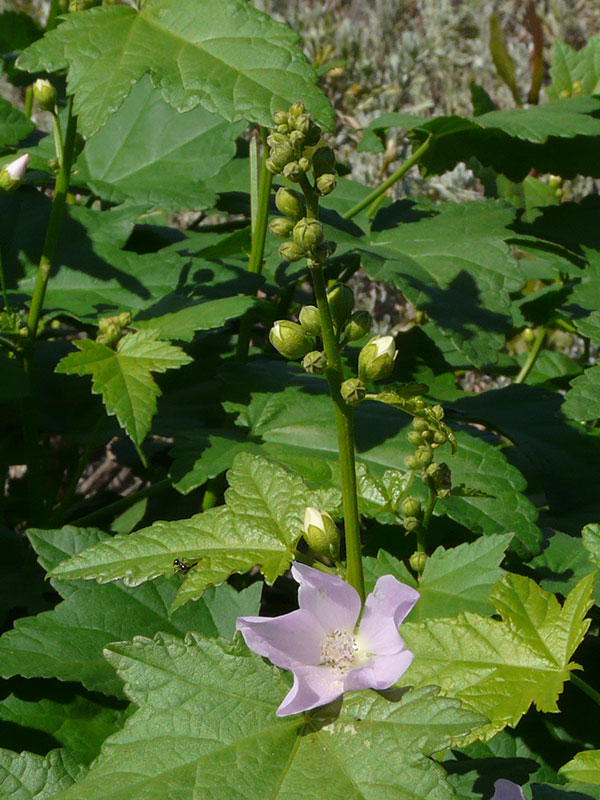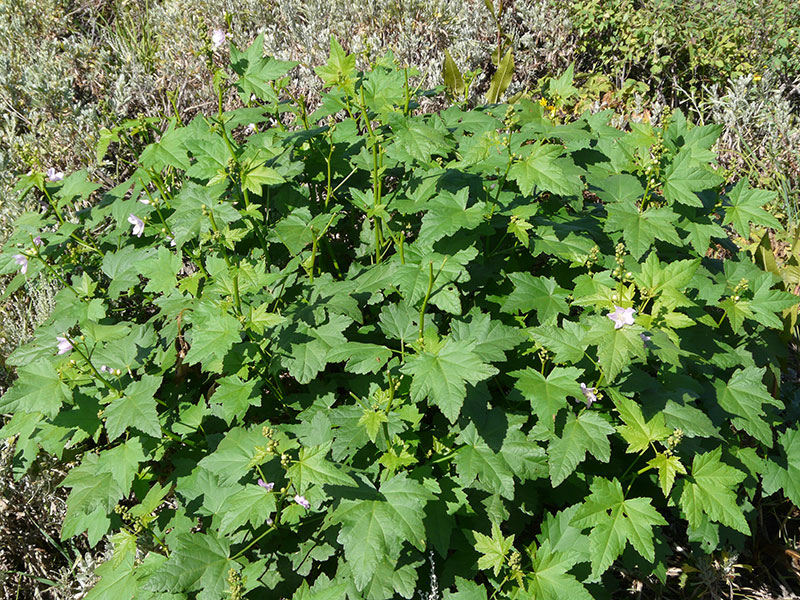Iliamna rivularis / streambank globemallow
- showy, pink flowers, sometimes rose or nearly white
- tall, up to 6 feet
- large, broadly “heart-shaped” leaves with big, triangular lobes
Synonym: Iliamna remota
Also known as: streambank wild hollyhock, Kankakee globemallow, mountain globemallow, mountain hollyhock
This wild hollyhock is a herbaceous perennial with multiple stems rising from a single root crown or from seeds (very small seeds). The first time you see this plant, if you don’t know what it is, you might also note the leaves which are large, sort of heart-shaped, and with 3-7 deep lobes. Alternately, they may look very much like maple or grape leaves.
Streambank globemallow jumps out at you (visually speaking) with its large and bright, usually pink, flowers. If the inflorescence is fully expanded, there will be lots of flowers on a long raceme. The flowers are densely packed on a stalk reaching as much as 6 feet high. If, however, you find the plants early in the flowering process, there may be only one or two flowers. In that case, you might actually have to think about it for a while. It is often on stream banks or near water, in full sun or light shade, and on good soil. It is not tolerant of full shade. On the other hand, several of the gallery photos here were taken in a rather dry roadside area on up from Pine Creek Pass.
Ecologially, streambank globemallow is associated with fire and/or clearcutting. This is because the seeds have a very hard coat and can remain viable in the soil for more than 50 to several hundred years. The seed bank is likely to have several hundred small seeds per square foot. Exposure of the soil to warmth after clear cutting favors seed germination, and the rate is increased hugely by burning with or without clearcutting. The relationship between fire and seed germination is largely responsible for the drastic population declines of wild hollyhocks, especially in the eastern US where fire suppression has changed the structure of the forest canopy and left the understory in deep shade.
My thanks to Rose Lehman of the US Forest Service in the Valley for help identifying the Pine Creek Pass photos as streambank globemallow.
| Color | |
|---|---|
| Family | |
| Blossom size | |
| Inflorescence size | |
| Inflorescence type | |
| When? | |
| Where? |
